Cutting thick rubber can be a daunting task, especially for those who are not familiar with the material. This durable and versatile material is commonly used in various industries such as construction, automotive, and manufacturing, making it essential to have the knowledge and skills to cut it effectively.
We will discuss how to cut thick rubber and the different methods and tools you can use with ease and precision. From safety precautions to step-by-step instructions, we will cover everything you need to know to successfully cut thick rubber like a pro. So, if you are ready to tackle your rubber-cutting project, read on to learn the techniques and tips that will enable you to effortlessly cut through even the thickest rubber materials.

Tools And Equipment Needed For Cutting Thick Rubber
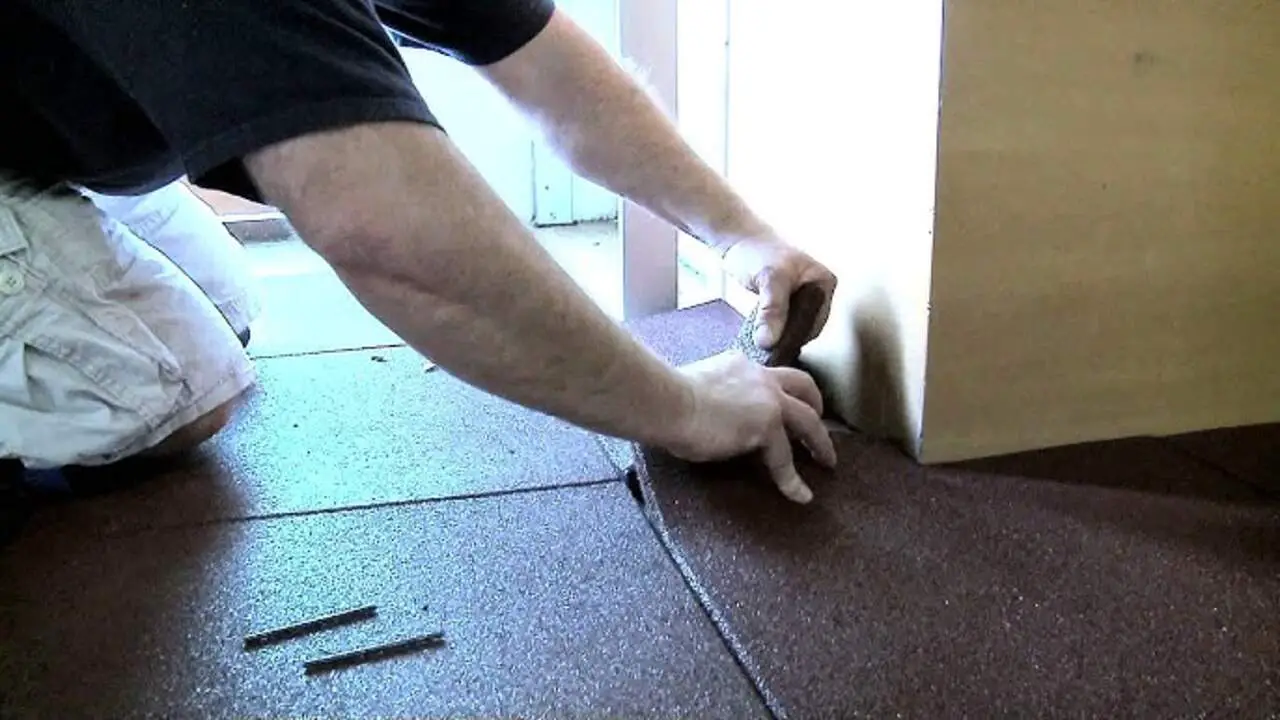
- Sharp utility knife or box cutter
- Rubber cutting scissors or razor knife
- Rotary cutter or fabric cutter with a sharp blade
- Rubber mallet or hammer
- Cutting mat or sturdy surface to protect the working area
- Straight-edge ruler or measuring tape
- Clamps or vice grips to secure the rubber while cutting
- Protective gloves and safety goggles
How To Cut Thick Rubber – Mastering the Art of Cutting
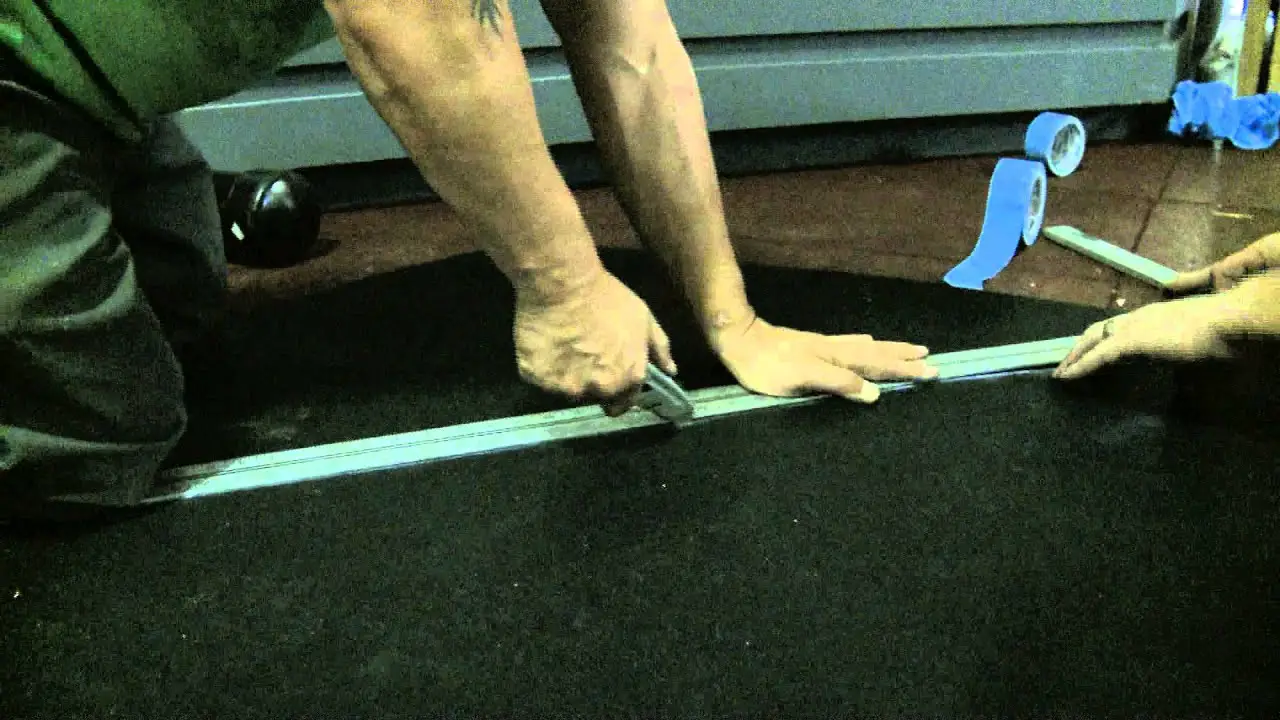
Knowing how to cut thick rubber is of utmost importance in various industries and applications. Thick rubber materials, such as rubber sheets or mats, can be heavy and difficult to handle. Cutting them improperly or using the wrong tools can lead to accidents and injuries.
By having the knowledge and skills to cut thick rubber correctly, you can minimize the risk of accidents and create a safer work environment for yourself and your colleagues. Below, we provide in-detailed guidelines for cutting thick rubber:
Step 1 – Cleaning Your Rubber

It is important to ensure that rubber is clean and free from any dirt or debris. Step one of this process involves cleaning the rubber thoroughly. This step is essential as it prepares the surface for further treatment or processing.
To begin, gather all the necessary tools for cleaning the rubber. This may include a mild detergent, warm water, a soft cloth, and a brush with soft bristles. First, remove any loose dirt or particles by gently brushing the rubber with the soft bristle brush. Be careful not to apply too much pressure to avoid damaging the material.
Next, prepare a mixture of warm water, soapy water, or a small amount of mild detergent. Dip the soft cloth into the solution and squeeze out any excess liquid. Gently wipe the rubber surface in a circular motion, ensuring complete coverage.
Step 2 – Mark The Cutting Line On Your Rubber
A ruler or measuring tape will be needed to measure and mark the desired length or shape on the rubber. Additionally, a pen or marker with a fine point or sharp edge should be used to make clear and visible markings.
Place the rubber on a flat and stable surface, making sure it is securely positioned. When marking the rubber, be sure to use a steady hand and apply consistent pressure to create a clear and visible line. It is advisable to mark both the top and bottom surfaces of the rubber, especially if you are cutting through a thick piece. This will help ensure that the line is visible from different angles and provides a clear guide for the cutting tool.
Step 3 – Cutting Your Thick Rubber With A Sharp Knife
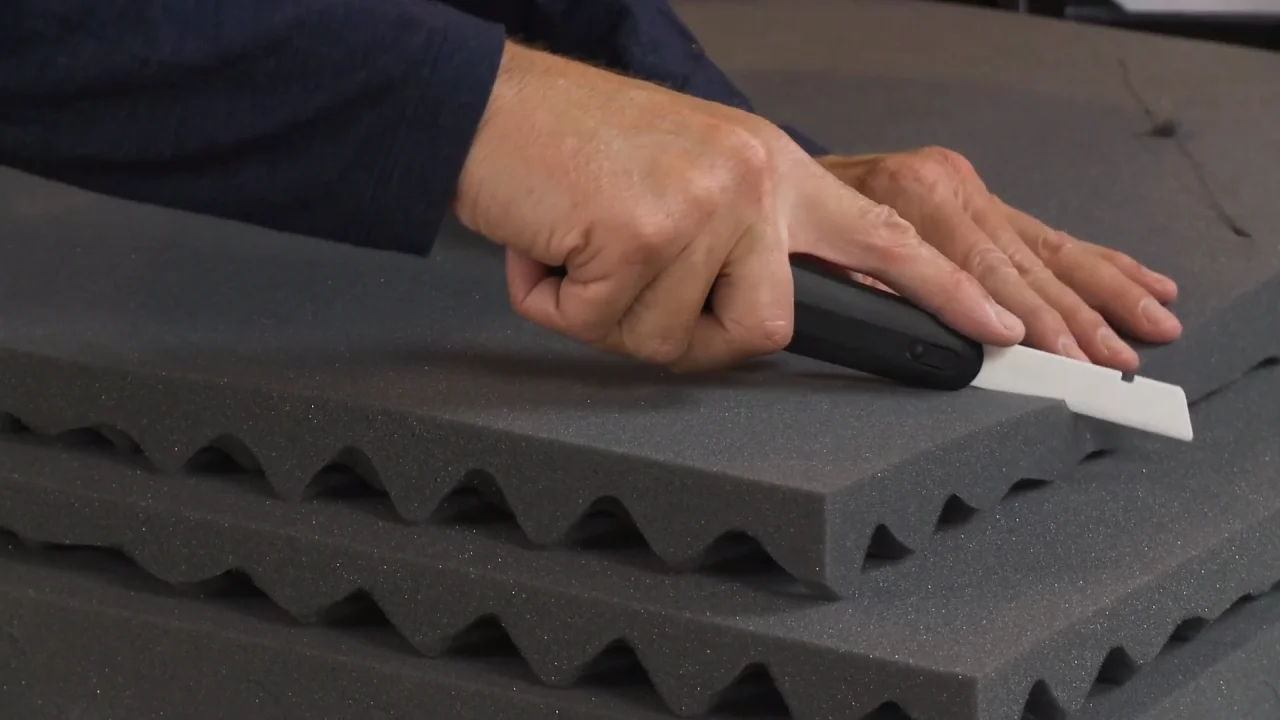
It is essential to select a knife that specifically designs for cutting rubber. These knives typically feature a strong and durable utility knife blade that can withstand the rigours of cutting through thick rubber.
When ready to cut, it is crucial to use steady and deliberate strokes with the knife, applying consistent pressure to ensure a smooth and even cut. It is advisable to make multiple passes if necessary, rather than attempting to cut through the entire thickness of the rubber in one go.
This technique minimizes the risk of the knife getting stuck or causing uneven cuts. Additionally, maintaining a firm grip on the knife and maintaining a steady hand are essential for achieving accurate cuts. It is crucial to maintain focus and concentration throughout the cutting process to prevent any accidents or errors.
Step 4 – Cutting Thick Rubber With A Dremel Tool
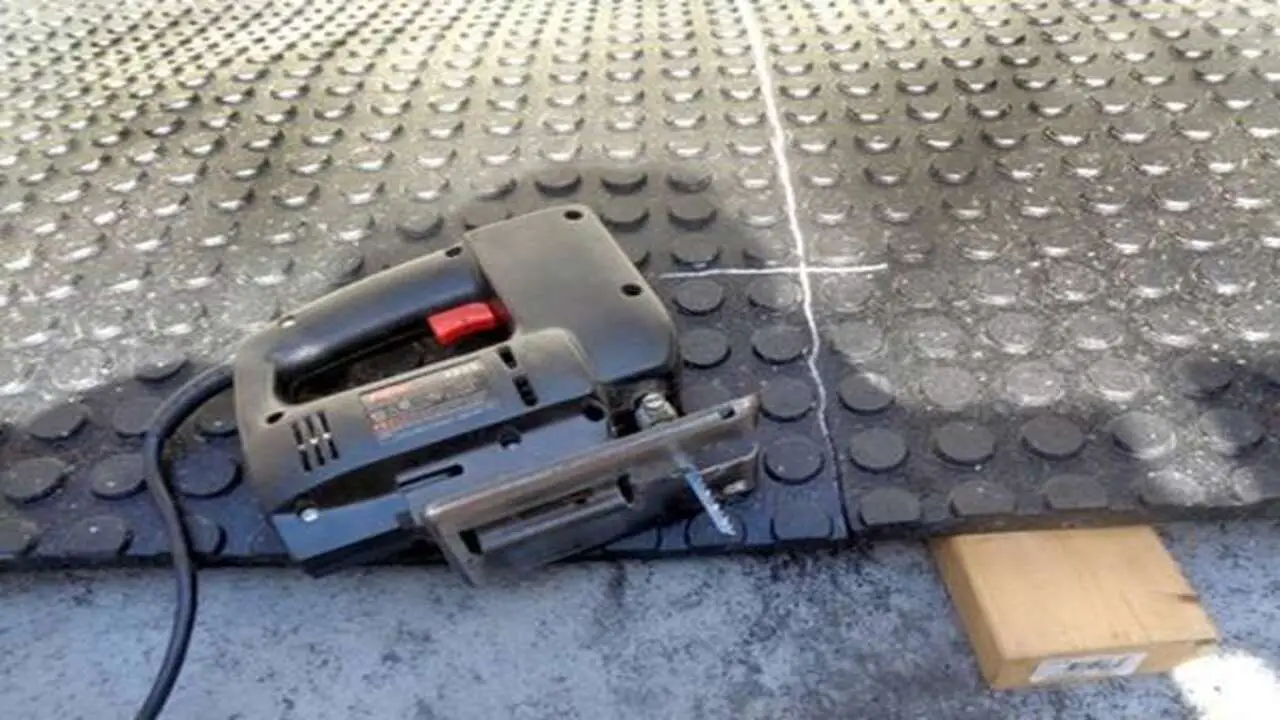
It is essential to select a knife that specifically designe for cutting rubber. These knives typically feature a strong and durable blade or sharp blade that can withstand the rigours of cutting through thick rubber.
When ready to cut, it is crucial to use steady and deliberate strokes with the knife, applying consistent pressure to ensure a smooth and even cut. It is advisable to make multiple passes if necessary, rather than attempting to cut through the entire thickness of the rubber in one go. This technique minimizes the risk of the knife getting stuck or causing uneven cuts.
Step 5 – Cutting Thick Rubber With A Plasma Cutter
It is important to select the appropriate plasma cutter for the task at hand. Choosing a plasma cutter with sufficient power and amperage capacity is essential for cutting through thick rubber smoothly. Once the right equipment is in place, it is necessary to secure the rubber material firmly to prevent any movement during the cutting process.
Next, adjust the settings on the plasma cutter according to the thickness of the rubber being cut. It recommends starting with a lower amperage setting and gradually increasing it until the desired cutting speed and accuracy are achieved.
When cutting thick rubber with a plasma cutter, it is important to maintain a steady hand and move the cutter along the predetermined cutting line at a consistent speed. This helps to prevent overheating and ensures clean and precise cuts.
Step 6 – Cutting Thick Rubber With A Sawzall
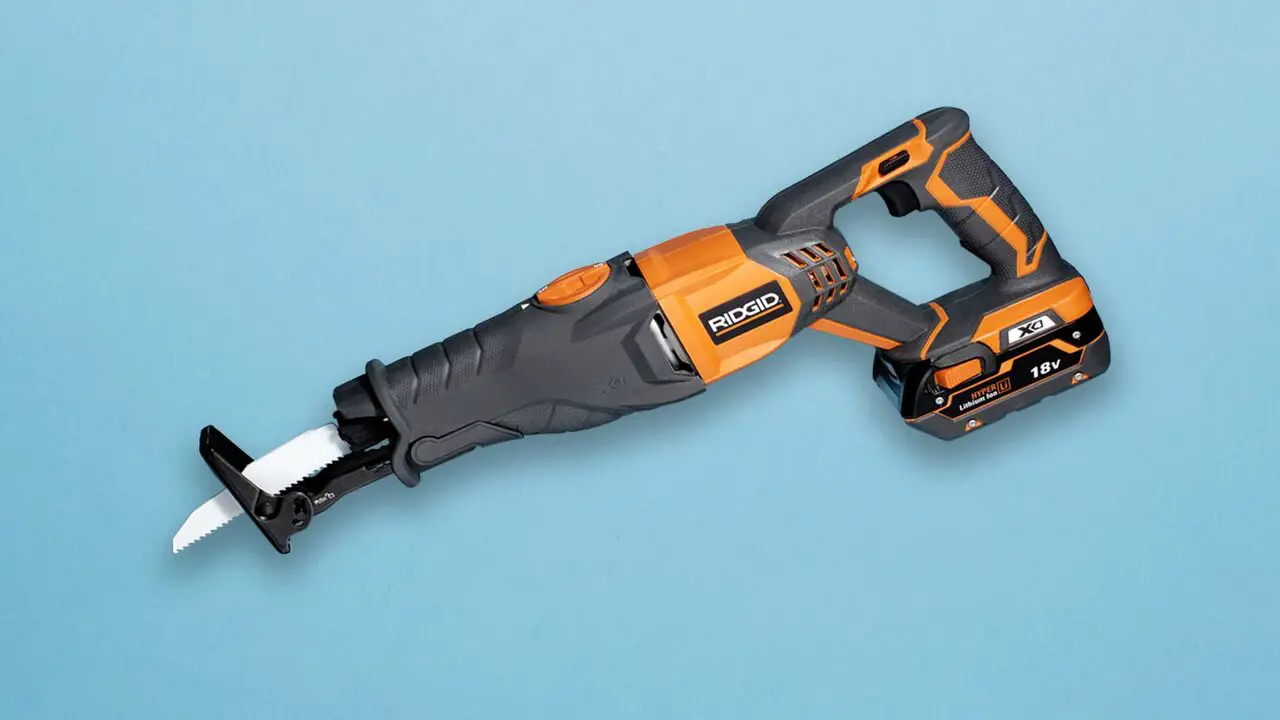
When it comes to cutting thick rubber, a Sawzall can be a handy tool to have. The first step is to choose the right blade for the job. Look for a blade that specifically design for cutting rubber or has fine teeth that can easily slice through the material. Before cutting, make sure to secure the rubber in place using clamps or a vice grip to prevent it from moving during the cutting process.
Start by making an initial cut to create a groove in the rubber, then continue to cut along the desired line with slow and steady motions. It’s important to wear protective gloves and goggles while using a Sawzall, as small pieces of rubber may fly off during the cutting process. With proper technique and safety precautions, you can achieve clean and precise cuts in thick rubber using a Sawzall.
Step 7 – Cutting Thick Rubber With A CNC Machine
Selecting the appropriate CNC machine is crucial. A machine with a strong and rigid frame, capable of handling heavy-duty cutting tasks, recommend for cutting thick rubber. Next, the cutting tools used in the CNC machine should specifically design for cutting rubber. These tools should have sharp cutting edges and be made from materials that can withstand the demands of cutting through thick rubber.
When setting up the CNC machine for cutting thick rubber, it is important to adjust the cutting parameters accordingly. This includes setting the appropriate cutting speed, feed rate, and depth of cut. It recommends starting with conservative settings and make adjustments as needed to achieve the desired cut quality.
Step 8 – Cutting Thick Rubber With A Table Saw
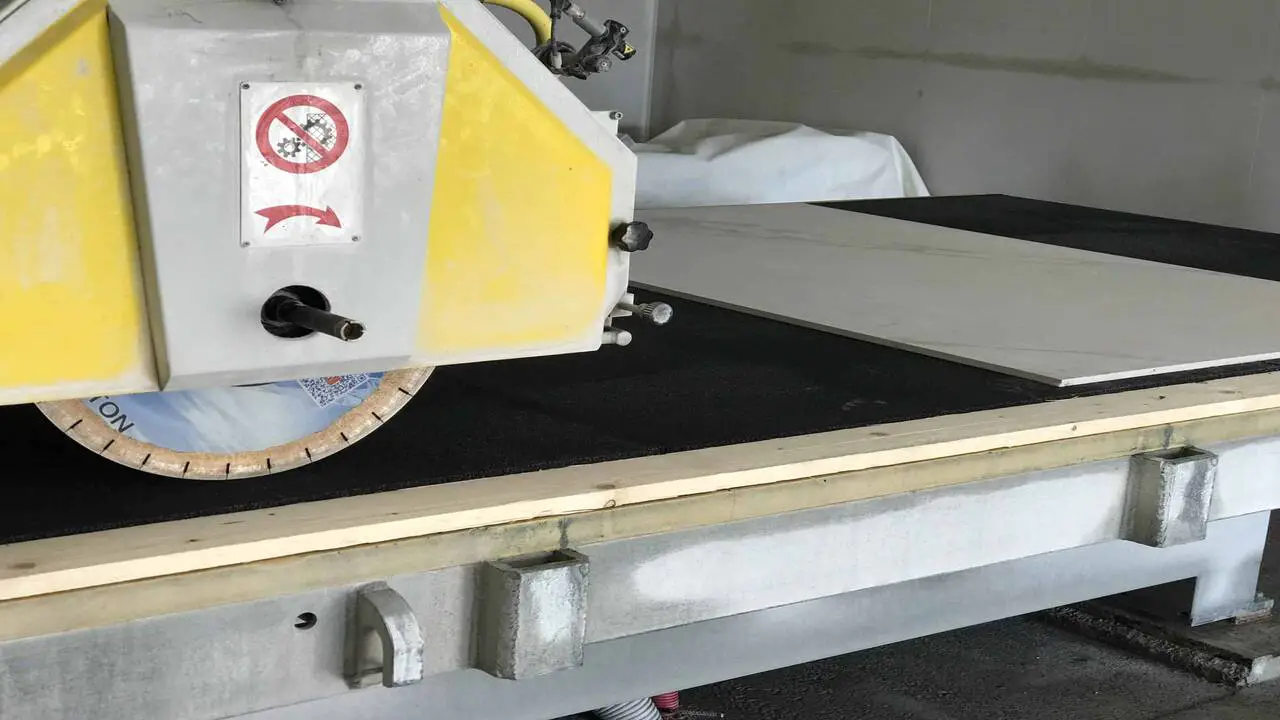
It is essential to select a table saw with a suitable blade for cutting rubber. Opt for a blade with a high tooth count and a low tooth angle, such as a fine-toothed carbide blade. This type of blade will minimize tearing and provide cleaner cuts. Prior to cutting, ensure that the table saw is set up correctly, with the blade securely attached and properly aligned.
Position the rubber material on the table saw, making certain that it is stable and firmly held in place. Slowly feed the rubber into the blade, applying steady pressure without forcing it. It is crucial to maintain a controlled and consistent speed throughout the cut to prevent any mishaps. Additionally, periodically inspect the blade for any signs of wear or dullness, as a sharp blade is vital for achieving clean and precise cuts.
Step 9 – Clean Up The Cut
It is crucial to select the appropriate tool for the job. A sharp utility knife with a sturdy blade is often the preferred choice. Before making any cuts, it is vital to ensure that the rubber surface is clean and free of any debris. This will prevent any unwanted friction or resistance during the cutting process. To clean up the box cutter, a straight edge or ruler can use as a guide to ensure a straight and accurate line.
Applying consistent pressure while cutting and using a slow and steady motion will help prevent the rubber from tearing or bunching up. If the rubber material is particularly thick, it may be helpful to make multiple shallow cuts rather than trying to cut through it in one pass. This method will help maintain control and precision throughout the cutting process.
Step 10 – Repeat On The Other Side
After completing the cut on one side, it is time to replicate the same process on the other side. To ensure symmetry, flip the rubber piece over and align the straightedge or ruler with the original markings. Take the necessary precautions to ensure that the rubber does not shift or move during this step.
By following the “repeat on the other side” method, you can achieve consistent and accurate cuts on thick rubber. This technique not only guarantees symmetrical results but also ensures that the rubber maintains its structural integrity. Practice caution and precision throughout the process to achieve professional-quality cuts.
Common Mistakes To Avoid When Cutting Thick Rubber
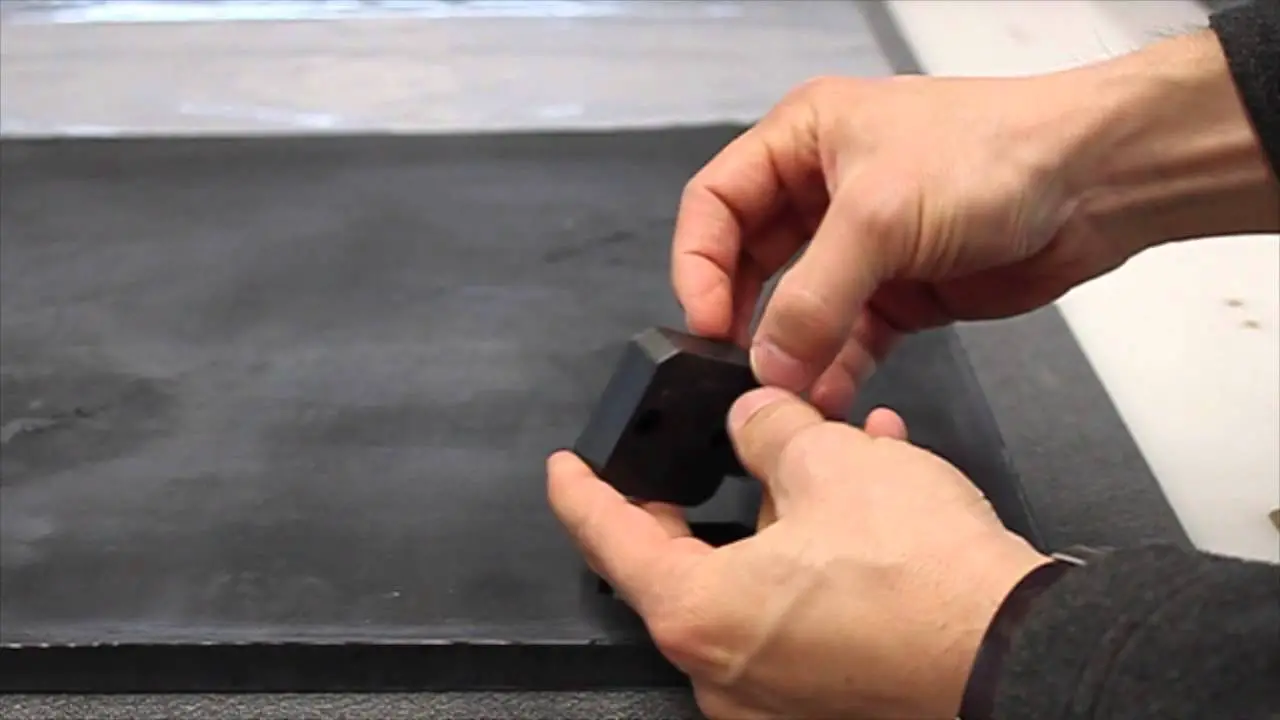
Knowing common mistakes to avoid when cutting thick rubber is essential for anyone working with this material. Rubber cutting is a precise task that requires skill, precision, and attention to detail. Failure to adhere to proper cutting techniques can result in costly mistakes and compromised end products.
- Using The Wrong Cutting Tool: Avoid using a dull or incorrect cutting tool for thick rubber, as it can lead to jagged or uneven cuts.
- Lack Of Proper Support: Ensure that the rubber is adequately supports during the cutting process to prevent it from shifting or moving, which can result in inaccurate cuts.
- Cutting Too Quickly: Cutting thick rubber requires patience and precision. Rushing the process can lead to mistakes, such as crooked cuts or uneven edges.
- Insufficient Lubrication: Using a suitable lubricant or cutting oil can help reduce friction and make the cutting process smoother. Failing to use lubrication can result in excessive heat buildup or the blade getting stuck in the rubber.
- Neglecting Safety Measures: Always wear appropriate safety gear, such as gloves and eye protection, when cutting thick rubber. Ignoring safety precautions can lead to injuries from accidental slips or cuts.
- Inadequate Measurement And Marking: Take accurate measurements and mark the rubber before cutting to ensure precise and consistent cuts. Guessing or skipping this step can result in incorrect dimensions or wasted material.
- Not Reviewing Cutting Techniques: Familiarize yourself with proper cutting techniques for thick rubber, such as using slow, steady pressure and making multiple passes if necessary. Neglecting to learn or practice these techniques can lead to subpar results.
Tips For Laser Cutting Silicone Rubber
Knowing the tips for laser cutting silicone rubber is of utmost importance in various industries and applications. Silicone rubber is a versatile material known for its flexibility, durability, and resistance to extreme temperatures. It widely use in sectors such as automotive, electronics, aerospace, and medical devices. However, laser cutting silicone rubber requires specific techniques and considerations to ensure accurate and efficient results.
- Choose The Right Laser Cutter: Ensure that the laser cutter you are using is suitable for cutting silicone rubber. Consult the equipment specifications or seek expert advice if needed.
- Adjust The Laser Settings: Silicone rubber requires specific laser settings for optimal cutting results. Experiment with different power levels, cutting speeds, and frequencies to find the best settings for your specific material.
- Use A High-Quality Lens: A high-quality lens can help achieve cleaner and more precise cuts on silicone rubber. Regularly clean and maintain the lens to ensure optimal performance.
- Secure The Material: Silicone rubber can be flexible and prone to movement during cutting. Use adhesive or clamps to secure the material firmly in place to prevent distortion or shifting.
- Test Cut Settings: Before cutting a large piece, perform test cuts on small scraps of silicone rubber to finetune the laser settings and ensure desired results.
- Proper Ventilation: Laser-cutting silicone rubber can produce fumes and odors. Ensure that your working area is properly ventilated to maintain a safe and comfortable working environment.
- Monitor The Cutting Process: Keep a close eye on the laser cutting process to detect any potential issues such as excessive melting, burning, or charring. Adjust the settings accordingly to avoid damaging the material.
Conclusion
Cutting thick rubber can be a challenging task, but with the right tools and techniques, it can be done efficiently and effectively. Whether you’re working with rubber mats, tires, or any other thick rubber material, following the proper steps on how to cut thick rubber will ensure clean and precise cuts.
From using a sharp utility knife to employing a circular saw with a fine-toothed blade, there are various methods you can use depending on the thickness and type of rubber you’re cutting. Remember to take safety precautions such as wearing protective gloves and goggles to avoid any accidents. With these tips in mind, you’ll be able to tackle your rubber-cutting projects with confidence and precision.
FAQs
What Are The Benefits Of Cutting Thick Rubber Mats?
The benefits of cutting thick rubber mats are that they can be easier to manage and move around. They also tend to be less slippery, which makes them safer for people walking on them.
What Is The Best Way To Cut Thick Rubber Mats?
The best way to cut thick rubber mats is by using a sharp utility knife or a heavy-duty pair of scissors. It may be helpful to use a straight edge or ruler to guide the blade and ensure a clean, straight cut.
Can Thick Rubber Mats Be Cut Using A Laser Cutter Or A CNC Mill?
Laser cutters and CNC mills can use to cut thick rubber mats, but they require more advanced preparation and skill than a circular saw.
What saw can cut rubber?
A rotary saw or a utility knife with a serrated blade can use to cut rubber.
What tool can cut thick rubber?
A sharp utility knife or an electric reciprocating saw with a fine-toothed blade can effectively cut through thick rubber.

I am passionate about tools and electric work. I love finding new tools and experimenting with them.

